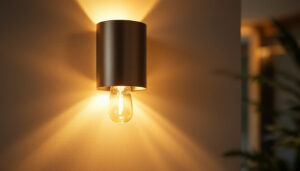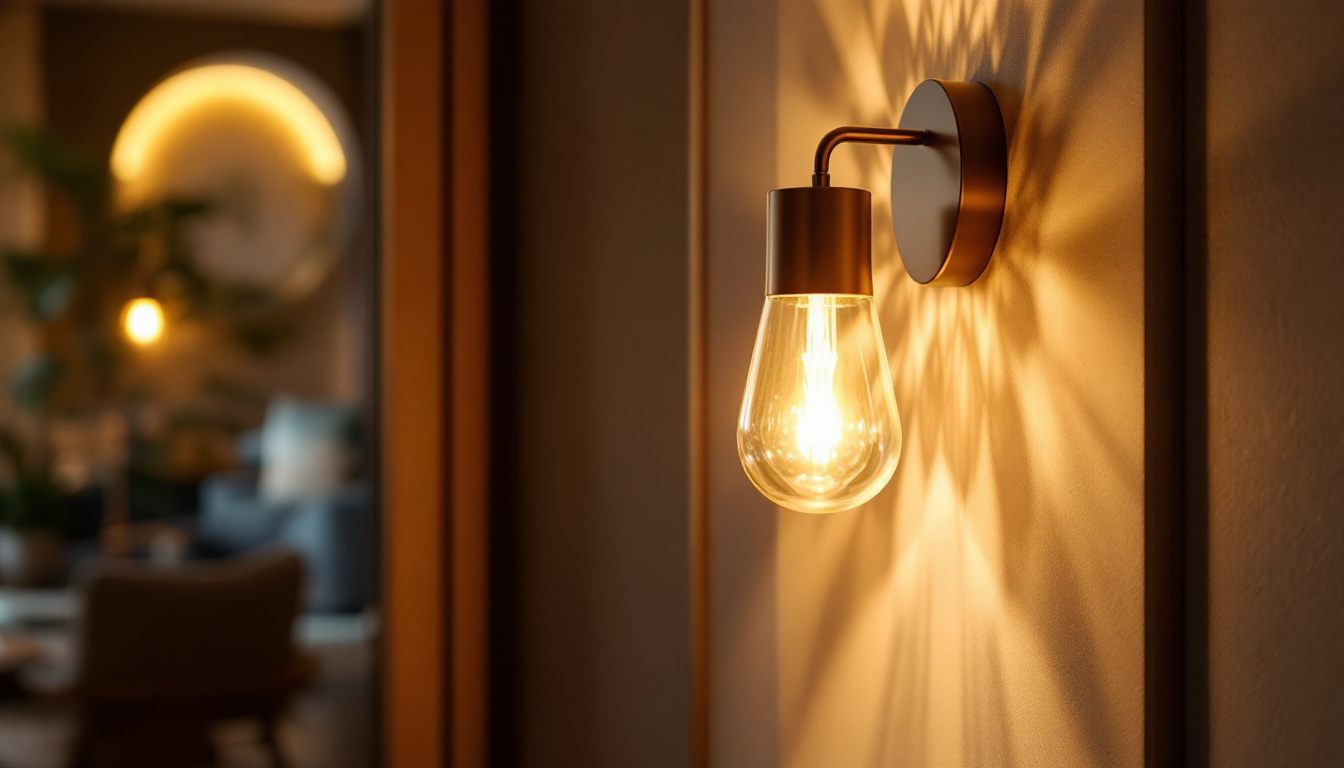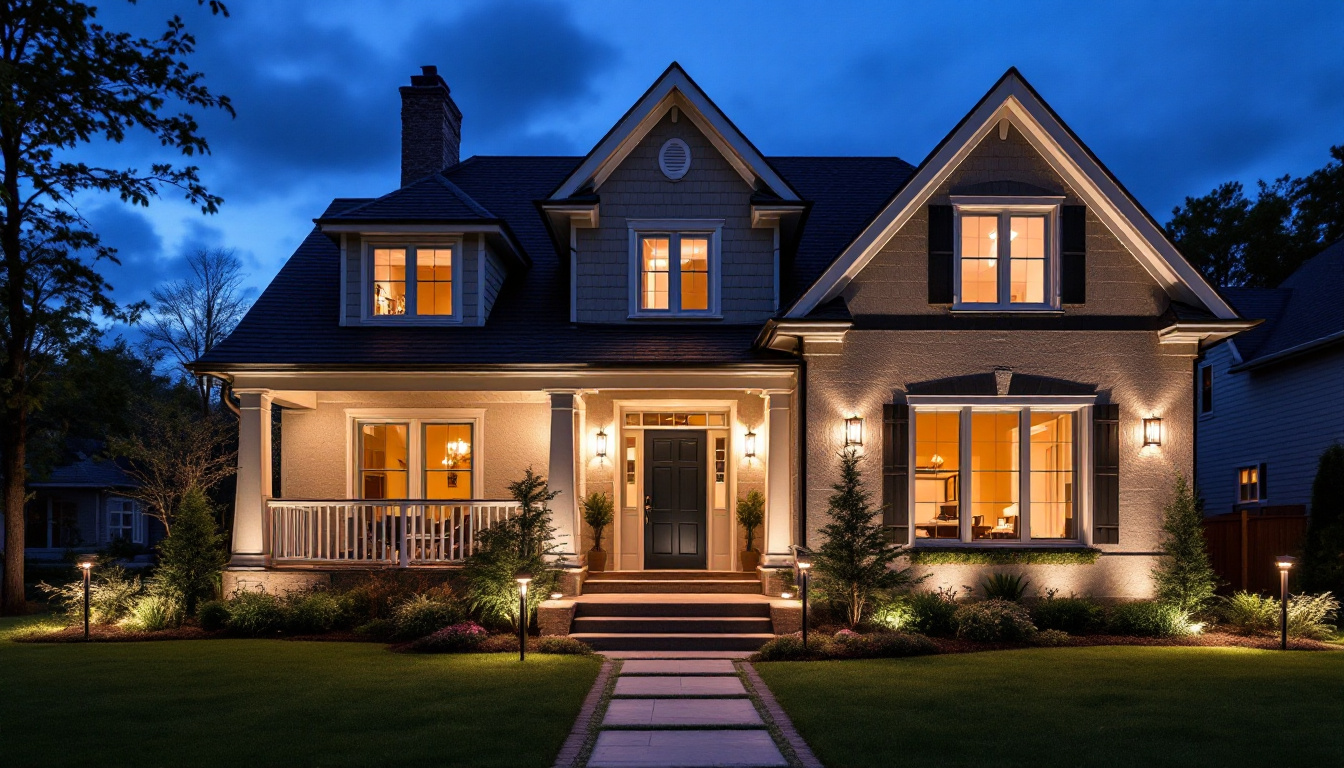

Wall sconces are an essential element in the toolkit of any lighting contractor. These versatile fixtures not only provide ambient lighting but also serve as decorative elements that can enhance the aesthetic appeal of any space. In this article, we will explore the various aspects of wall sconces that every lighting contractor should be familiar with, from design considerations to installation techniques.
Before diving into the specifics, it is crucial to understand what wall sconces are and how they differ from other types of lighting fixtures. Wall sconces are mounted directly to the wall and can be used for various purposes, including task lighting, accent lighting, and general illumination. Unlike overhead lighting, which can often create harsh shadows, sconces provide a more diffused and ambient light, enhancing the overall atmosphere of a space.
Wall sconces come in a variety of styles and designs, each serving different functional and aesthetic needs. Some common types include:
Wall sconces can be used in a multitude of settings, making them a versatile choice for contractors. Here are some popular applications:
Furthermore, wall sconces can also serve as a focal point in a room, drawing the eye and creating visual interest. For instance, a pair of ornate sconces can frame a piece of artwork or a statement mirror, adding depth and dimension to the decor. Additionally, with the rise of smart home technology, many modern sconces now come equipped with adjustable brightness and color temperature settings, allowing homeowners to tailor their lighting to suit different moods and occasions. This adaptability makes wall sconces not just a functional element, but also a dynamic part of interior design that can evolve with your lifestyle.
When selecting wall sconces for a project, several design considerations come into play. Understanding these factors can help contractors make informed choices that align with their clients’ needs and preferences.
The style of the wall sconce should complement the overall design theme of the space. For instance, a rustic home may benefit from sconces made of reclaimed wood, while a contemporary setting might call for sleek, geometric designs. It’s essential to consider the existing decor and color palette to ensure harmony in the design. Additionally, the finish of the sconces—whether matte, polished, or brushed—can further enhance the aesthetic appeal. A well-chosen finish can either blend seamlessly with the surroundings or serve as a striking focal point, drawing the eye and adding character to the room.
Choosing the right size of sconces is critical for both functionality and aesthetics. A large sconce may overpower a small room, while a tiny fixture may get lost in a spacious area. As a rule of thumb, the height at which sconces are mounted should be approximately 60 to 66 inches from the floor, ensuring they are at eye level. Moreover, the proportion of the sconce in relation to the wall space is equally important; for example, in a hallway, a pair of sconces flanking a piece of artwork can create a balanced look, while in a larger space, multiple sconces may be needed to achieve the desired illumination and visual interest.
With advancements in lighting technology, contractors have more options than ever when it comes to the type of bulbs used in sconces. LED fixtures are becoming increasingly popular due to their energy efficiency and longevity. However, contractors should also consider the color temperature of the bulbs, as this can significantly affect the ambiance of the space. Warm white bulbs can create a cozy and inviting atmosphere, perfect for living rooms and bedrooms, while cooler temperatures may be more suitable for task-oriented areas like kitchens and offices. Additionally, dimmable sconces can offer versatility, allowing homeowners to adjust the brightness according to the time of day or occasion, enhancing the overall functionality of the lighting design.
Proper installation of wall sconces is vital to ensure both safety and functionality. Here are some key techniques that lighting contractors should keep in mind.
Before installing wall sconces, it’s essential to assess the electrical setup. Ensure that the wall can support the weight of the fixture and that there is adequate wiring in place. If the sconces are hardwired, contractors must follow local electrical codes to ensure safety and compliance. Additionally, it’s wise to check for any existing electrical issues, such as faulty wiring or outdated circuits, which could pose a risk during installation. Using a voltage tester can help confirm that the power is off before beginning work, further enhancing safety during the installation process.
There are various mounting methods for wall sconces, and the choice often depends on the design of the fixture and the wall surface. Some sconces are designed for direct mounting, while others may require a mounting bracket. Properly securing the fixture to the wall is crucial to prevent accidents or damage. For heavier sconces, using wall anchors or toggles can provide extra support, ensuring that the fixture remains securely in place over time. Furthermore, considering the wall material—be it drywall, plaster, or brick—can influence the choice of mounting hardware, as different surfaces may require specific tools or techniques for optimal installation.
As mentioned earlier, the height at which sconces are installed can significantly impact their effectiveness. Additionally, the placement of sconces should be strategic to ensure that they illuminate the intended areas without creating harsh shadows. For instance, sconces placed on either side of a mirror in a bathroom should be at an equal height for balanced lighting. Moreover, the distance between sconces can also affect the overall ambiance; spacing them too far apart may result in uneven lighting, while placing them too close can create an overly bright spot. It is often recommended to install sconces about 60 to 66 inches from the floor to the center of the fixture, but this can vary based on the specific room and its intended use. In hallways or staircases, positioning sconces at regular intervals can enhance safety and visibility while adding a decorative touch to the space.
Once wall sconces are installed, regular maintenance is necessary to ensure they continue to function effectively and look great. Here are some maintenance tips for lighting contractors to share with their clients.
Dust and grime can accumulate on wall sconces, affecting their brightness and appearance. Contractors should recommend using a soft, damp cloth to wipe down fixtures regularly. For glass sconces, a glass cleaner can help maintain clarity and shine.
Clients should be informed about the type of bulbs used in their sconces and how to replace them. LED bulbs typically have a longer lifespan, but when replacements are needed, it’s essential to choose the same wattage and type to maintain consistency in lighting.
Encourage clients to periodically inspect their sconces for any signs of damage, such as loose wiring or cracked glass. Early detection of issues can prevent more significant problems down the line and ensure safety.
As with any design element, wall sconces are subject to trends that can influence client preferences. Staying informed about these trends can help contractors provide valuable insights to their clients.
Smart home technology is becoming increasingly popular, and wall sconces are no exception. Many modern sconces can be integrated with smart home systems, allowing clients to control lighting through their smartphones or voice-activated devices. This feature adds convenience and enhances the overall user experience.
With a growing emphasis on sustainability, many manufacturers are now offering eco-friendly wall sconces made from recycled materials or featuring energy-efficient designs. Contractors should be aware of these options to meet the demands of environmentally conscious clients.
Another trend is the use of mixed materials in wall sconce designs. Combining metal with wood, glass, or fabric can create unique and visually appealing fixtures that stand out. Contractors should explore these options to offer clients something distinctive.
Wall sconces are a vital component of any lighting contractor’s repertoire. Understanding their types, applications, design considerations, installation techniques, and maintenance requirements can significantly enhance the quality of service offered to clients. By staying informed about the latest trends and technologies, contractors can ensure they are providing the best solutions for their clients’ lighting needs.
As the demand for stylish and functional lighting continues to grow, wall sconces will remain a popular choice for both residential and commercial spaces. By mastering the art of wall sconce installation and design, contractors can elevate their projects and leave a lasting impression on their clients.
Ready to enhance your lighting projects with the finest wall sconces on the market? Look no further than LumenWholesale, where we provide contractors with high-quality, specification-grade lighting solutions at unbeatable wholesale prices. Our extensive selection is designed to meet the highest industry standards, ensuring you deliver reliable and high-performance lighting to your clients. Plus, with the convenience of free shipping on bulk orders, you can enjoy premium lighting at the best value — without any hidden fees. Elevate your lighting installations today and discover the best in wholesale lighting at LumenWholesale.

Discover essential insights into selecting and installing the perfect outdoor lighting for homes.

Discover why UFO LED lamps are revolutionizing the lighting industry for contractors.

Discover why purchasing LED light bulbs in bulk from local distributors might not be the best choice.

Discover why purchasing flat panel lights in bulk from local distributors might not be the best choice.
Get notified when NEW deals are released.
Optimize your budget with wholesale discounts.
Only top-quality, specification-grade lighting products.
No additional costs at checkout - what you see is what you pay.
We understand the unique needs of contractors.